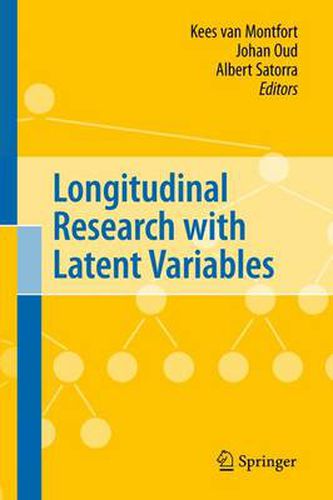Readings Newsletter
Become a Readings Member to make your shopping experience even easier.
Sign in or sign up for free!
You’re not far away from qualifying for FREE standard shipping within Australia
You’ve qualified for FREE standard shipping within Australia
The cart is loading…






This title is printed to order. This book may have been self-published. If so, we cannot guarantee the quality of the content. In the main most books will have gone through the editing process however some may not. We therefore suggest that you be aware of this before ordering this book. If in doubt check either the author or publisher’s details as we are unable to accept any returns unless they are faulty. Please contact us if you have any questions.
Since Charles Spearman published his seminal paper on factor analysis in 1904 and Karl Joresk og replaced the observed variables in an econometric structural equation model by latent factors in 1970, causal modelling by means of latent variables has become the standard in the social and behavioural sciences. Indeed, the central va- ables that social and behavioural theories deal with, can hardly ever be identi?ed as observed variables. Statistical modelling has to take account of measurement - rors and invalidities in the observed variables and so address the underlying latent variables. Moreover, during the past decades it has been widely agreed on that serious causal modelling should be based on longitudinal data. It is especially in the ?eld of longitudinal research and analysis, including panel research, that progress has been made in recent years. Many comprehensive panel data sets as, for example, on human development and voting behaviour have become available for analysis. The number of publications based on longitudinal data has increased immensely. Papers with causal claims based on cross-sectional data only experience rejection just for that reason.
$9.00 standard shipping within Australia
FREE standard shipping within Australia for orders over $100.00
Express & International shipping calculated at checkout
This title is printed to order. This book may have been self-published. If so, we cannot guarantee the quality of the content. In the main most books will have gone through the editing process however some may not. We therefore suggest that you be aware of this before ordering this book. If in doubt check either the author or publisher’s details as we are unable to accept any returns unless they are faulty. Please contact us if you have any questions.
Since Charles Spearman published his seminal paper on factor analysis in 1904 and Karl Joresk og replaced the observed variables in an econometric structural equation model by latent factors in 1970, causal modelling by means of latent variables has become the standard in the social and behavioural sciences. Indeed, the central va- ables that social and behavioural theories deal with, can hardly ever be identi?ed as observed variables. Statistical modelling has to take account of measurement - rors and invalidities in the observed variables and so address the underlying latent variables. Moreover, during the past decades it has been widely agreed on that serious causal modelling should be based on longitudinal data. It is especially in the ?eld of longitudinal research and analysis, including panel research, that progress has been made in recent years. Many comprehensive panel data sets as, for example, on human development and voting behaviour have become available for analysis. The number of publications based on longitudinal data has increased immensely. Papers with causal claims based on cross-sectional data only experience rejection just for that reason.